Ever wonder how a simple bottle can transform your drinking water into a potent wellness tool? Welcome to the intriguing world of hydrogen water bottles, devices engineered to infuse plain water with hydrogen gas, turning an ordinary hydration practice into a health-enhancing ritual.
But how do hydrogen water bottles work? This quick guide dives into the innovative technology that powers these bottles—a blend of chemistry and engineering designed to subtly yet effectively enhance the hydration benefits. Join us as we uncover the secrets behind their operation, offering insights that not only enlighten but also empower you to make informed decisions about incorporating hydrogen water into your health regimen.
How do Hydrogen Water Bottles Work: Understanding the Technology
Hydrogen water bottles are more than just trendy gadgets; they are the culmination of precise engineering and scientific innovation. At the heart of their functionality lies the technology of electrolysis, facilitated by a few critical components that ensure efficient hydrogen production. Let’s break down these components and understand their roles:
Electrolysis Chamber
The electrolysis chamber is the core where water’s transformation occurs. This sealed compartment is designed to hold water while it undergoes electrolysis, a process that splits water molecules into hydrogen and oxygen.
Electrodes
The electrodes, typically made from durable and inert materials like platinum or titanium, are positioned inside the electrolysis chamber. In electrolysis, they play a crucial role. Upon application of a voltage to them, water (H2O) breaks down into its two elemental components, hydrogen and oxygen.
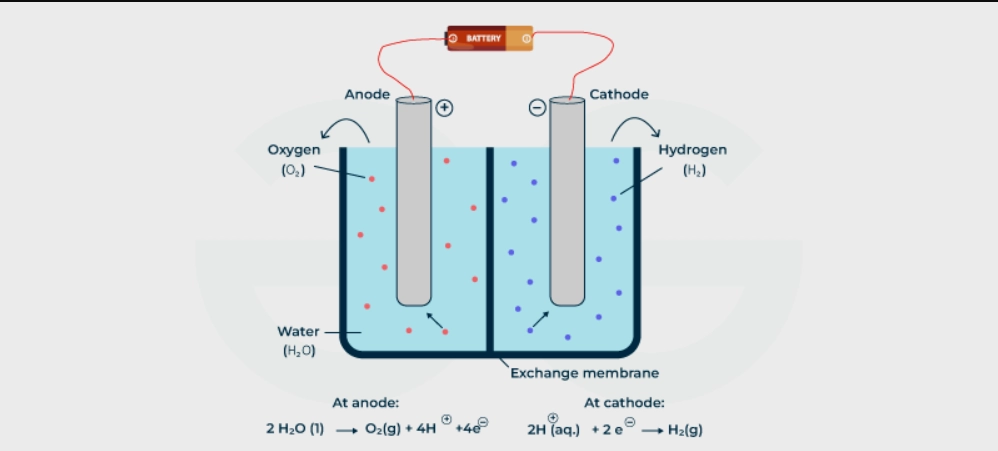
Electrical Source
The process is powered by an electrical source, which is often a rechargeable battery integrated into the bottle. This power source is crucial as it provides the necessary energy for electrolysis to occur, driving the electrodes to initiate the chemical reaction.
Catalysts
On electrodes, catalysts are often coated to enhance electrolysis efficiency. These substances help to increase the rate at which water molecules are split, thus boosting the generation of hydrogen without requiring higher amounts of electricity.
Control Circuitry
To ensure the system operates safely and efficiently, modern hydrogen water bottles are equipped with sophisticated control circuitry. This technology manages the electrolysis process, regulating the amount of electricity that flows to the electrodes and monitoring the system to prevent overheating and ensure optimal hydrogen production.
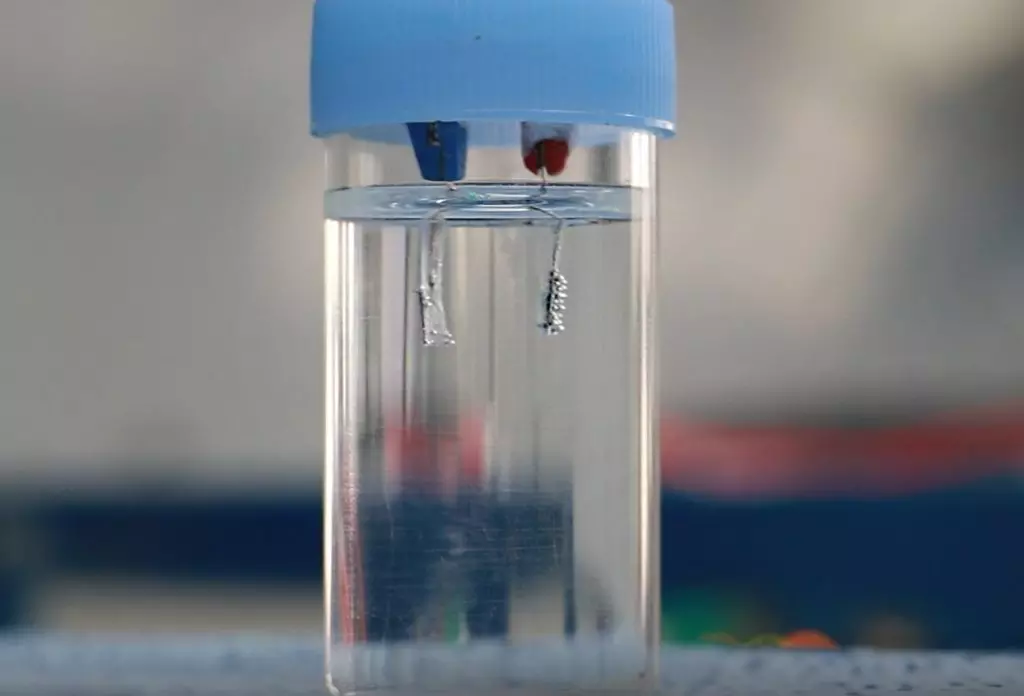
These components work in synergy to transform ordinary water into hydrogen-rich water, making the technology behind hydrogen water bottles a remarkable example of how modern engineering can intersect with daily wellness practices.
By controlling the precise conditions under which electrolysis occurs, these bottles offer a convenient way to access hydrogen-enriched water, purported to provide health benefits. As we delve deeper into the specifics of the electrolysis process in the next section, we’ll see exactly how these elements come together to perform their crucial functions.
Read More: Is Hydrogen Water Legit? A Comprehensive Analysis Of Science, Testimonials, And Safety
The Electrolysis Process
Electrolysis is the scientific process at the core of how hydrogen water bottles operate. This method not only splits water into its elemental components but also ensures that hydrogen is available in a form that the body can absorb. Here’s a closer look at how this process works within the confines of a hydrogen water bottle:
Initiation of Electrolysis
The electrolysis process begins when the electrical source within the bottle delivers a current to the electrodes. This electrical current is the driving force behind electrolysis, providing the energy necessary to initiate the chemical reaction in the water.
Splitting of Water Molecules
As the electric current passes through the water, it interacts with the water molecules (H2O). The electrical energy disrupts the stable molecular structure of water, causing the oxygen and hydrogen atoms to separate. This separation occurs because the electric current induces a positive charge on the oxygen and a negative charge on the hydrogen, leading them to disconnect from each other.
Formation of Hydrogen and Oxygen Gas
Once the water molecules are split, hydrogen and oxygen gases are formed. In a hydrogen water bottle, the primary focus is on hydrogen. The hydrogen atoms quickly pair up to form hydrogen gas (H2), while oxygen typically forms O2 and is released from the water or vents out of the bottle.
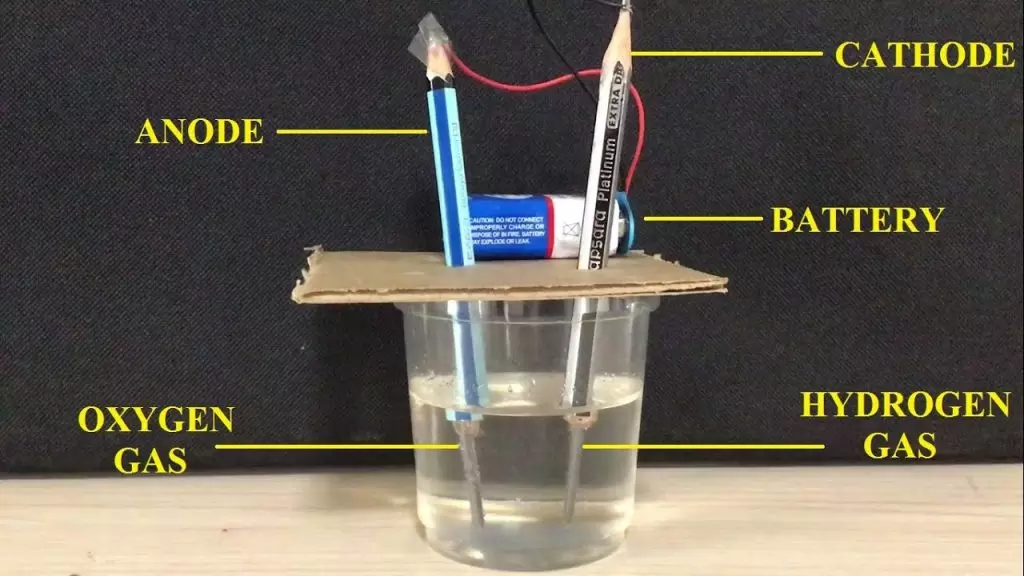
Dissolution of Hydrogen in Water
The newly formed hydrogen gas does not immediately escape the water; instead, it dissolves into the surrounding liquid. The efficiency of this dissolution depends significantly on the pressure within the electrolysis chamber and the surface area of the electrodes. The more efficiently hydrogen is dissolved into the water, the more saturated the resulting water becomes with hydrogen gas.
Role of the Membrane
While not directly part of the electrolysis reaction, a semi-permeable membrane often plays a crucial role in the process. This membrane selectively allows hydrogen to pass through while blocking impurities and ensuring that hydrogen gas is primarily infused into the water. This selective permeability enhances the purity and concentration of hydrogen in the water, optimizing its potential health benefits.
Conclusion of the Process.
The electrolysis process continues as long as sufficient power is supplied from the battery and water is available for electrolysis. Modern hydrogen water bottles allow users to control the duration and intensity of this process, often through built-in timers or adjustable settings that ensure the optimal amount of hydrogen infusion based on personal preference or intended use.
Through this detailed explanation of the electrolysis process, it’s clear how hydrogen water bottles harness electrical energy to enrich water with hydrogen, transforming plain water into a more beneficial drink. In the next section, we’ll explore how users can manage and adjust these operations through various control mechanisms and settings integrated into the bottles.
Membrane’s Role in Hydrogen Infusion
In the complex operation of hydrogen water bottles, the membrane holds a pivotal role, ensuring the purity and efficacy of the hydrogen infusion process. A specialized component is needed to maintain the quality of hydrogen-enriched water. Let’s examine the membrane’s functions and importance in more detail:
Selective Permeability
The primary function of the membrane in a hydrogen water bottle is its selective permeability. This means the membrane is engineered to allow certain molecules, specifically hydrogen, to pass through while blocking others. It acts as a barrier that separates the electrolysis chamber from the drinking water compartment or external environment, ensuring that only hydrogen gas infiltrates the water.
Ensuring Purity
One of the biggest challenges in the electrolysis of water is the potential production of unwanted gases or impurities along with hydrogen and oxygen. The membrane plays a crucial role in filtering out these impurities. By allowing only hydrogen gas to pass through, it ensures that the water remains pure and free from any by-products of the electrolysis process, such as ozone or other gases that could potentially be harmful if consumed.
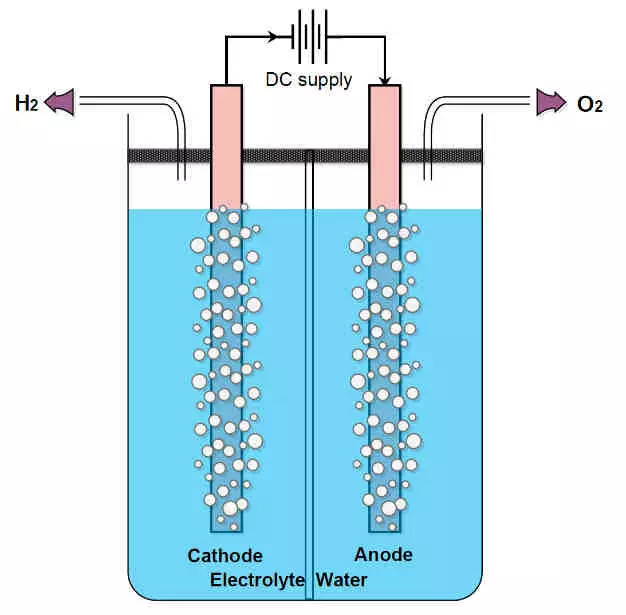
Enhancing Hydrogen Concentration
The effectiveness of a hydrogen water bottle in delivering health benefits is largely dependent on the concentration of hydrogen that remains dissolved in the water. The membrane contributes significantly to this aspect by creating a controlled environment where hydrogen gas is efficiently dissolved into the water under pressure.
This process ensures a higher saturation of hydrogen, which is critical for achieving the desired therapeutic effects.
Protection Against Oxidation
The membrane also protects the electrolysis components by preventing oxygen produced during the electrolysis process from coming into contact with the electrodes or other sensitive parts of the bottle. This helps extend the lifespan of the electrodes and maintain the overall efficiency of the bottle.
Material and Durability
Membranes in hydrogen water bottles are typically made from materials that are both durable and inert, such as certain types of polymers or ceramics. These materials are chosen for their ability to withstand the chemical reactions occurring during electrolysis and their resistance to degradation from continuous exposure to hydrogen and oxygen gases.
In conclusion, the membrane is not just a filter but a critical component that enhances the functionality, safety, and effectiveness of hydrogen water bottles. It ensures that the hydrogen infusion process is both pure and potent, making the end product—hydrogen-rich water—a reliable addition to health and wellness routines.
Next, we will look into how users can control this process through various settings and mechanisms provided by the bottle’s design.
Control Mechanisms and Settings
Hydrogen water bottles are equipped with a variety of control mechanisms and settings that allow users to manage and optimize the hydrogen infusion process according to their preferences. It is critical to have these features in place to ensure that the device operates safely, efficiently, and effectively. Let’s examine how these controls influence the operation of the bottle and contribute to its functionality:
Adjustable Infusion Settings
Most hydrogen water bottles come with options to adjust the level of hydrogen infusion. There are different settings available to control how much hydrogen gas is dissolved in water. This customization is particularly beneficial for users who may have specific health goals or personal preferences for the strength of hydrogen concentration in their drinking water.
Timer Functions
To prevent over-operation and to ensure optimal usage, many hydrogen water bottles feature built-in timers. These timers can be set to stop the electrolysis process after a predetermined period automatically. This not only conserves battery life but also prevents excessive hydrogen gas production, which can affect the taste of the water and potentially reduce the effectiveness of the infusion.
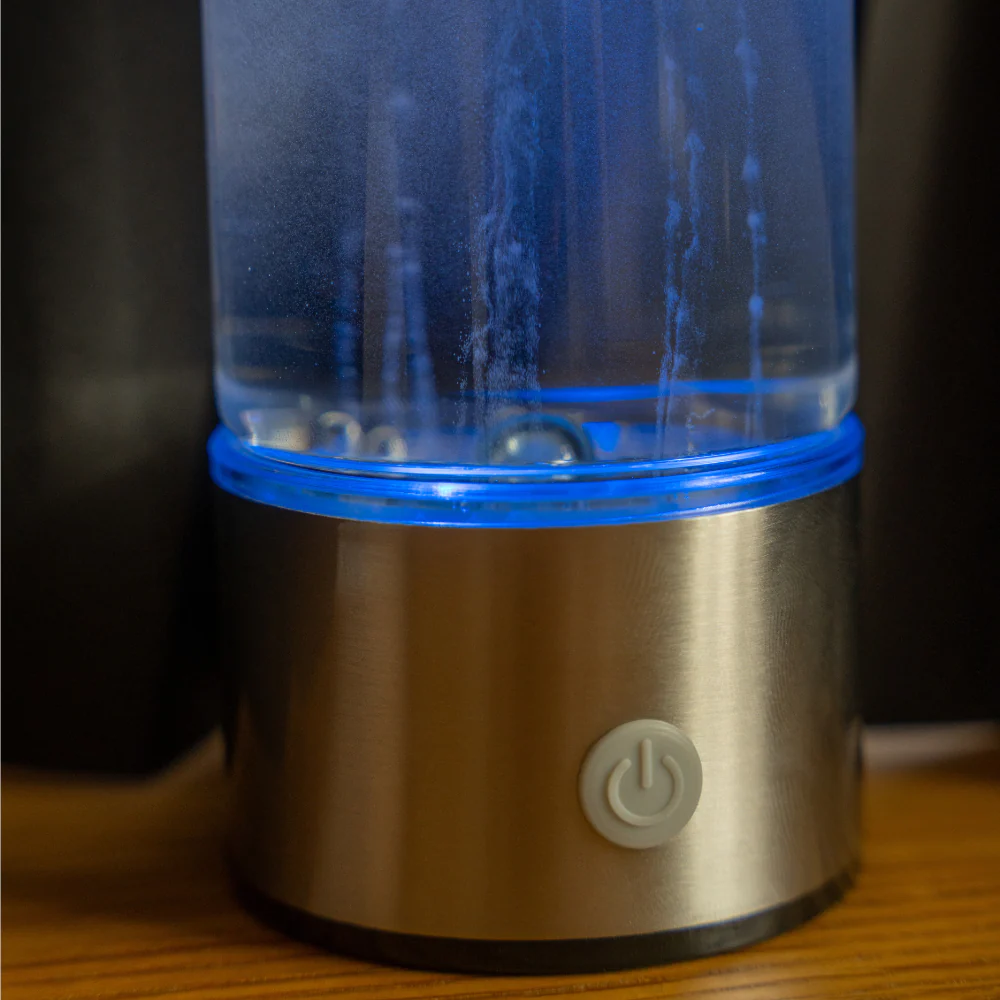
Safety Features
Safety is paramount in devices that involve electrical components and chemical reactions. Hydrogen water bottles typically include safety features such as auto-shutoff mechanisms that activate if the device overheats or if an electrical fault is detected. Additionally, there are often sensors to detect when water levels are too low for operation, which helps prevent damage to the electrodes and other critical components.
Battery Management
The integrated battery management systems in these bottles ensure that the power supply is stable and efficient. These systems help regulate the charging and discharging cycles, thus maximizing battery life and maintaining consistent performance across all operations of the bottle.
LED Indicators and Digital Displays
Many modern hydrogen water bottles are equipped with LED indicators or digital displays that provide visual feedback about the status of the hydrogen infusion process. Users can monitor the hydrogen level, battery life, and operation mode on these displays so they can make adjustments as needed.
Read More: Hydrogen Water Tablets Vs. Bottle: A Comprehensive Guide
Connectivity and Smart Features
Advancements in technology have led some hydrogen water bottles to incorporate smart features, including Bluetooth connectivity and associated mobile applications. These apps allow users to control their hydrogen water bottles remotely, customize settings more precisely, and track their usage patterns over time.
These control mechanisms and settings enhance the user experience by providing flexibility and assurance in the operation of hydrogen water bottles. By enabling precise control over the hydrogen infusion process, these features ensure that users can enjoy the benefits of hydrogen-rich water tailored to their individual needs and preferences.
Lastly, we will summarize the key points discussed and emphasize the importance of understanding hydrogen water bottles’ operational details.
Conclusion
Hydrogen water bottles represent a significant advancement in personal hydration technology, offering a sophisticated method for enhancing water with hydrogen gas. The key to their functionality lies in the electrolysis process, which cleverly splits water molecules into hydrogen and oxygen through an electrical charge.
This process is not only essential for hydrogen production but also for ensuring that the hydrogen is effectively dissolved into the water, making it readily available for consumption.
This membrane is crucial to ensuring the purity and effectiveness of hydrogen infusion in these bottles. It acts as a selective barrier, allowing only hydrogen to pass through while filtering out any other gases or impurities. This ensures that the water remains pure and rich in hydrogen, maximizing the potential health benefits.

Control mechanisms and settings further enhance the user experience and safety, allowing for customization of hydrogen levels and operational times. These features make it possible for users to tailor the device’s performance to their personal health goals and preferences, ensuring convenience and efficiency.
In summary, understanding how hydrogen water bottles work—through the detailed mechanisms of electrolysis, the critical role of the membrane, and the advanced control settings—provides valuable insights into the technology behind this modern hydration tool.
As we continue to seek innovative ways to improve our health and wellness routines, hydrogen water bottles stand out as a compelling example of how engineering and science can come together to benefit our daily lives.

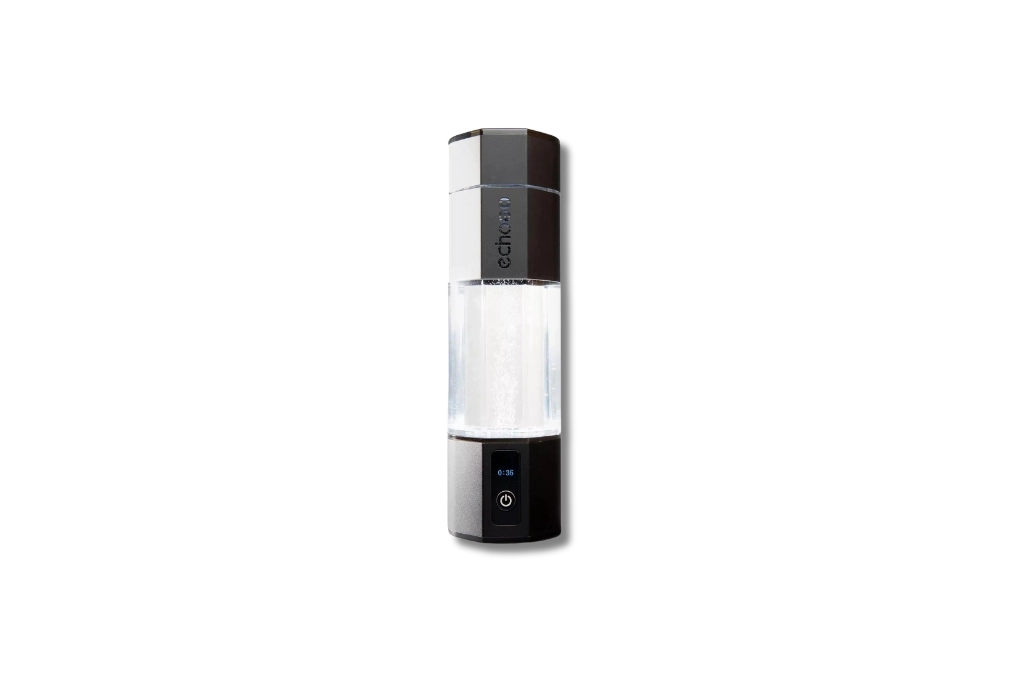
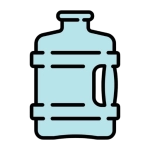


Can you be more specific about the content of your article? After reading it, I still have some doubts. Hope you can help me.
You can ask anything related to hydrogen water.
Your article helped me a lot, is there any more related content? Thanks!